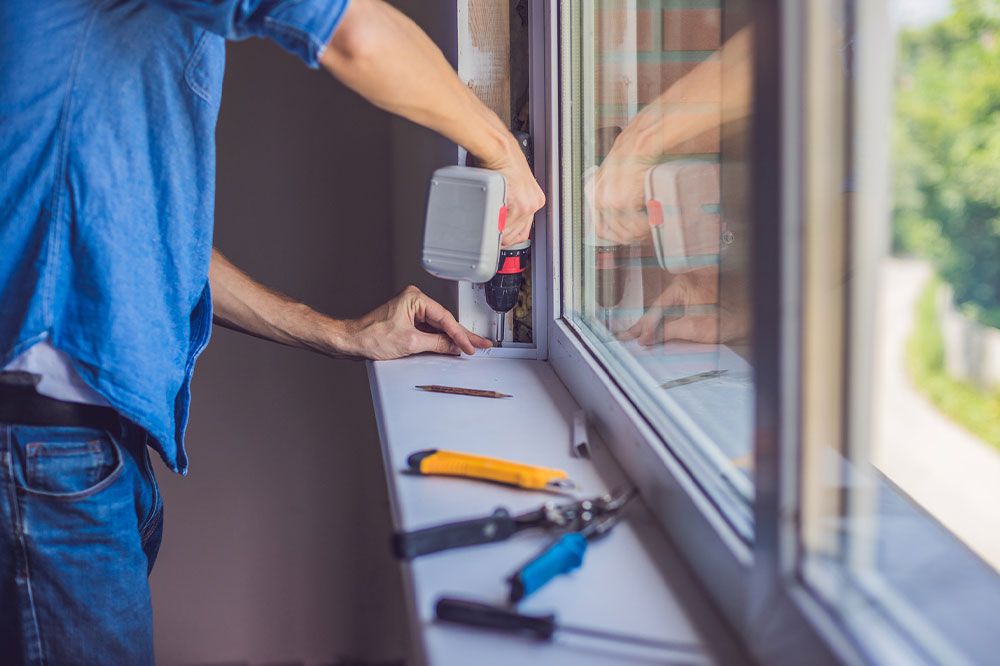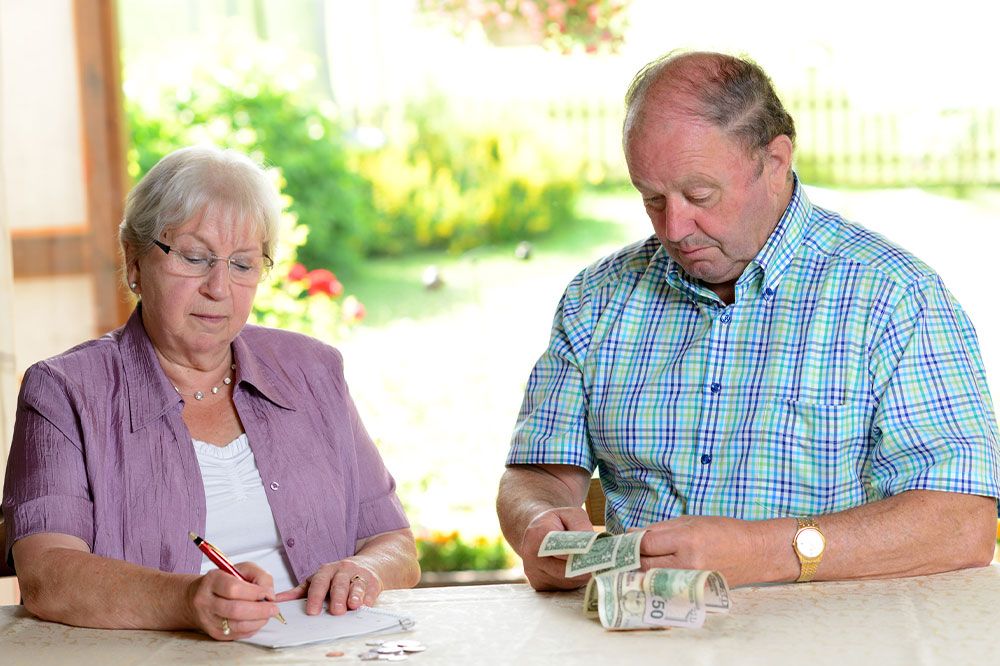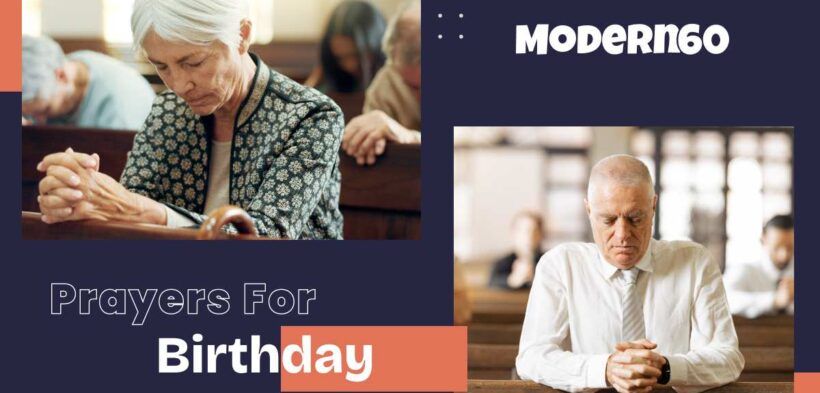12 Sources of Home Repair Assistance for Seniors in 2024
Repairs and refurbishment are vital for any home. This is because routine repairs and other maintenance work can keep your home functional and safe. However, home repairs can be expensive. Fortunately, there are several organizations and programs that provide vital financial aid and physical assistance to help seniors with home repairs and maintenance. This list of home repair assistance programs for seniors should give you a great starting point!
What are home repair assistance programs?
Home improvement services offer homeowners services like minor home repairs, maintenance, mobility and accessibility improvements, basic household furnishings and appliance repair, and the replacement and purchase of home-related items.
Elderly home repair programs help senior citizens receive grants, loans, or discounts on service fees for repairs and other home maintenance activities. There are several kinds of sources from which you can receive financial assistance. For example, financial programs from the federal government, state governments, local public bodies, non-profit organizations, private companies, and free-of-charge services fall under home repair assistance aids.
Assistance programs that facilitate home improvements for seniors are vital for a number of reasons. But before we go into that, we would like to give you some insight into the best programs and sources through which you can receive assistance.
What are the different types of senior citizen home repair programs?
Here are some of the most easily accessible programs and organizations that help seniors with home repair:
-
Older Adults Home Modification Grant Program (OAHMP)
The OAHMP initiative provides financial assistance through grants for seniors to get their home repairs done at lower prices. The Department of Housing and Urban Development (HUD) is the public body that regulates this program. The OAHMP is a federal program created especially for low-income elderly homeowners and is valid across all counties nationwide.OAHMP, like many other home repair programs for seniors, enables you to remain in your current home permanently through modifications that are reasonably priced, easily accessible, and have long-lasting positive effects on your home. These programs help create a safe home repair habitat for you. They significantly reduce the possibility of falls and injuries, thereby maintaining an acceptable level of safety within your home. What’s more, HUD designed this program to improve the accessibility of homes and their functionality. You can, as the saying goes, “age in place” rather than settle in an assisted care facility or a nursing home when the time comes.The program works this way: HUD provides grants worth millions of dollars (the amount awarded in August 2022 was $30 million) to nonprofit organizations and other entities. These organizations, also known as the grantees of the OAHMP, then carry out home repairs and modifications, such as changing broken restroom faucets, installing grab bars and railings, and installing adaptive safety equipment, such as non-slip tiles and strips for showers, stairs, and tubs. You can visit the HUD website to check out the grantees of the applications.
The grants under this program are primarily for meeting the home modification and repair needs of low-income older adult homeowners who are above the age of 62. Organizations such as nonprofits, approved housing agencies, specialized organizations that help senior citizens with home repairs, and state/local governments are eligible to receive this grant.
As per HUD’s goals with this initiative, one of the main ones was to provide senior citizens with the flexibility to make necessary safety and convenience-based changes. This flexibility enables you to gracefully adjust to the changing lifestyle that comes with advancing age.
The HUD reviews all aspects of applications from entities seeking grants under this program in the NOFO (Notice of Funding Opportunity). The NOFO emphasizes that specific repairs and modifications, especially those involving the installation of grab bars, lever-handle door knobs, faucets, railings, and adaptive equipment, such as a temporary ramp, handheld shower head, raised toilet seats, and tub-shower transfer benches, are preferred for home repairs that can take a substantial amount of time for completion. Accordingly, the HUD encourages service providers to avoid potential project implementation delays when it comes to home repair for senior citizens.
Though available across all counties, this program is most helpful for primary homeowners. So, if you live in a rented apartment or a house, you will find it considerably harder to make the most of this.
-
Single Family Housing Repair Loans and Grants
Similar to HUD’s initiative enlisted above, the US Department of Agriculture (USDA) has created and regulated the Single Family Housing Repair Loans and Grants program. Like the first initiative, this one is geared toward homeowners rather than seniors staying in a rented home.The program is also called the Section 504 Home Repair program and was created by the USDA to make loans available to low-income homeowners. This was to improve specific facets of their homes through repairs and modernization. More importantly, the program grants elderly, low-income individuals the funds for carrying out repairs and other maintenance activities to eliminate health and safety hazards.In order to qualify for this program that assists with home improvements for seniors, you need to be the homeowner, have a family income that falls under the low-income limit, and be unable to obtain affordable credit from anywhere else. With this program, the USDA targets individuals aged 62 or older who find it challenging or impossible to repay a home repair and maintenance loan.
Apart from these criteria, the properties of seniors looking to receive grants through this program must be located in rural areas classified as eligible by the USDA. Check the USDA Income and Property Eligibility website for all the requisite details to know if your home qualifies.
This critical home repair program provides the all-important funds in the form of loans or grants for you to repair, maintain, modernize, or improve your home. By doing so, the Single Family Housing Repair Loans and Grants program helps you eliminate any medical hazards or potentially life-threatening structural elements in your house. The regulations of this program ensure that the loans or grants given must improve the safety and health aspects of your home.
At any given time, the maximum loan amount you can receive through this scheme to make home repairs is $40,000. You can repay the loans over 20 years from when they are offered and the repayment interest rate is a meager 1 percent. Additionally, loan seekers can receive the loan without a down payment. There are other rules as well. For instance, you will need to offer full title service to receive loans of more than $25,000. For example, if a person is seeking a grant for plumbing help for seniors or any kind of elderly home repair, the maximum amount they can receive is $10,000. So, unless you sell your property within three years of receiving a grant, you do not have to repay the money to the USDA.
Some beneficiaries may need help repaying the loan amount in full. In such instances, you might receive part of the money as a loan (as much as you can repay on time with the added interest amount) and the remaining portion as a grant. The combined maximum amount when you add loans and grants from this program is $50,000.
If you apply for a loan or grant through this elderly home repair program, you will get financial aid depending on whether funding is available in your area. Applicants can apply for money throughout the year. The application process for a grant or loan is incredibly easy, too. You can contact a USDA home loan specialist or your county’s rural development field office. To find a home loan specialist in your region, you can use this map to locate your county’s Rural Development field office on this map.
The financial assistance you get from this initiative can be used for a host of home repairs and maintenance activities like replacing a malfunctioning heating system or fixing a leaking roof. Cosmetic or structural alterations like upgrading the bathroom or kitchen too can be done.
However, such home repair programs for the elderly are usually meant to remove any health and safety risks indoors. So, a grant’s more fitting use would be repairing faulty electrical wiring, fixing piping issues, or winterizing a drafty house.
As with the previous initiative on this list, the main disadvantage of this elderly program for home repair is its unavailability to seniors who do not own their houses.
-
Home Improvement and Structural Alteration
The third and final federal program on our list also assists from a financial standpoint with home improvements for seniors, but there is a specific distinction. The unique aspect of this initiative is its usefulness for military veterans.The Department of Veterans Affairs provides three programs with similar offerings in terms of home repair assistance. Each of these initiatives exists to help people who worked in the military and have disabilities due to their profession.The three programs are the Home Improvements and Structural Alterations (HISA) benefit, the Special Housing Adaptation (SHA) grant, and the Specially Adapted Housing (SAH) initiative. Of these three, HISA can be considered the most beneficial to seniors, as its range of benefits is not limited to only individuals with service-related disabilities. Additionally, military veterans who have sustained injuries or are disabled due to aging can also use HISA to their advantage.
HISA’s grants help facilitate structural alterations and improvements to the health and safety aspects of your house and simplify other critical home repair programs. Apart from that, HISA also assists with home improvements needed for the continuation of treatment or access to lavatory and sanitary facilities for those with disabilities.
Military veterans with a medical determination indicating that their house needs improvements or structural alterations to aid the treatment of their disability get a HISA grant from Veterans Affairs (VA). If you are eligible for this, you can receive both a HISA grant and an SHA grant or SAH grant. The eligibility rules are subject to change, as is the scope of things covered under the grant.
HISA pays for the following: the cost of provisions that optimize all the entrances and exits in a veteran’s home, money needed for improving access to essential lavatory and sanitary facilities, cost of installing handrails, money needed to improve access to bathroom and kitchen counters, cost of improving electrical work for people needing dialysis, money needed as a means to provide plumbing help for seniors, cost of lowering switches and electrical outlets, and money needed to improve driveways and paths in the house.
Alternatively, the things that HISA will not pay for are the costs of optimizing walkways to exterior buildings, the cost of widening driveways exceeding a 7-foot-by-6-foot area, exterior decking costs (over 8-foot-by-8-foot), and the cost of adding a spa, jacuzzi, or hot tub in the house.
After receiving the HISA grant, you can contact any organization that helps seniors with home repairs for remodeling a residence. Before paying money or finalizing deals, you must ensure that the company you choose knows and understands ADA (Americans With Disabilities Act Standards for Accessible Design) compliance. Additionally, you need to choose the company with the best online reviews. This is to ensure that it can provide the best quality remodel to maximize the value of the HISA grant money.
HISA grants are generally used for medical- and safety-based house repairs and remodeling. So, to apply for a HISA grant, veterans must have a written prescription from a fee-based healthcare professional or from VA itself. The prescription needs to have the veteran’s medical justification diagnosis and their address, name, social security number, and personal/home contact number.
While applying for a grant, you need to provide the following items apart from the prescription:
- A filled-up VA form 10-0103, known as the Veterans Application for Assistance in Acquiring Home Improvement and Structural Alterations. If the house is leased or rented, you will need to attach a legibly written permission note from the property owner.
- Quotes from at least three licensed contractors (if your state law demands this) that include the following information:
- Contractor’s name, telephone, federal tax ID number or social security number, and address
- Itemized list of estimated material costs and labor expenses
- Plans and drawings
- Photo of the work site before construction changes
- All permits needed for the remodeling job
-
Residential Emergency Services to Offer Repairs to the Elderly
The state of New York offers active assistance to its seniors through RESTORE (Residential Emergency Services to Offer Home Repairs to the Elderly). If you are 60 and over and live in New York, you can apply to receive the financial resources this initiative offers to senior homeowners.Like other entries on this list, this program is mainly concerned with addressing emergencies and code violations that can affect your safety and sheer livability in your existing home. To avoid undesirable outcomes, RESTORE offers financial assistance to cover a variety of repairs, including fixing your house’s electrical wiring, heating apparatus, plumbing and pipework, and other structural and functional elements.
Apart from these, RESTORE also covers any measures used to improve the accessibility of your house, such as installing wheelchair ramps and grab bars, and the functional elements of a house, such as replacing appliances and furniture, both of which enable you to continue living independently and safely in your home. The complete list of activities covered under this program is as follows:
-
- Repairing wheelchair ramps
- Installing grab bars in the bathroom
- Modifying the flooring, porches, and decks to make them accessible for wheelchairs
- Adding walk-in platforms in bathrooms
- Modifying doors to make them accommodating for a wheelchair or a walker to pass without stopping
- Installing a chair lift apparatus
- Adding hand railings on staircases or repairs of broken stairs
Two eligible applicants (from a service provider’s perspective) are units of local government and NGOs that offer necessary services for elderly home repairs for at least a year before applying to receive RESTORE benefits for their future clients. On the other hand, the eligibility criteria for seniors to enjoy the benefits of this scheme are straightforward:
-
- A person must be sixty years of age or above.
- Their household income should not exceed the 100% rate of the area median income of the region where their house is located. This essentially means that if you stay in an urban zone in and around New York City, such as Richmond County and New York County, and if you are a single individual (without an immediate family to look after) and earn less than, say, $93,400 (less than 100% of the regional average of your zone in 2023 and subject to change), then you qualify for RESTORE. Similarly, in more rural areas, such as Hamilton County and Schuyler County, average incomes are about $79,200, which becomes the threshold while evaluating eligibility.
- They must own and occupy the house and receive financial assistance. This means that your house must be your primary residence. This program is not applicable in the scenario of a rented home.
- Their home must be one to four-unit residence, and they can also live in a mobile home.
- The person must be up to date with their insurance and property tax payments.
- The home condition for which repairs are needed must genuinely threaten the health or safety of the applicant.
The Division of Housing Community Renewal (DHCR) regulates RESTORE, while
not-for-profit organizations and New York municipalities administer subsidized services. In the case of municipalities, they receive funding from the Housing Trust Fund Corporation. RESTORE is applicable in every single county in New York.
As of 2022, the funding available was about $20,000 per residence. Approximately 10% of the amount offered covers administrative fees, while an additional 10% goes towards project delivery expenses.
-
Grants for Minor Home Repairs (California home repair assistance programs)
Apart from the federal government, there are many state bodies and NGOs with programs for senior citizens for home repair. Different state governments tend to have their own approach to providing home repair assistance to seniors. For example, major states, such as Florida, California, and New York, have the infrastructure and personnel in place to offer robust and reliable assistance programs for elderly home repair. Compared to those, some smaller states or counties lack resources to offer comprehensive home repair assistance.California has several repair assistance programs of its own. Richer counties and states, such as California, generally have more stability regarding funds than the smaller ones. Funds for home repairs and assistance are made available at the city and county levels for people. This means the California Department of Housing does not directly provide funds to homeowners.You might want to know the best time to apply for such repair assistance programs. In truth, any time works for an application. The funding largely depends on whether the regulatory body behind them has the requisite funds. You might have to wait a few months before you receive financial assistance for elderly home repairs.
Some of the cities covered by California’s various initiatives include Palmdale, Apple Valley, Fountain, Santa Maria, Oakland, Berkeley, San Diego, Anaheim, Buena Park, San Jose, Pasadena, Santa Clara, Stockton, and Fremont.
Although such programs are open to a wide variety of individuals or households, certain people are prioritized more, such as those who are specially abled, individuals actively involved in military duty, military veterans, individuals and families from low-income backgrounds, and senior citizens. Additionally, certain related programs also benefit law enforcement officials, firefighters, emergency medical personnel (EMTs), and teachers.
California’s Home Repair Assistance Programs cover elderly home repairs such as roof repairs, exterior wall repairs, foundations, plumbing help for seniors, and electrical wiring modifications to optimize the safety and functionality of your house. While most programs cover elderly home repairs, they are also subject to change. So, before applying for California’s grants, you can get in touch with officials from the California Department of Housing.
Although all of California’s programs are effective in their own distinct ways, one of the standout ones is Grants for Minor Home Repairs. This initiative enables you to preserve your current home by providing financial assistance for minor home repairs, such as the following:
- Fixing water heater blankets
- Minor plumbing repairs
- Installation of carbon monoxide detectors or smoke alarms
- Fixes made to the garbage disposal system
- Replacement or complete repair of external screens on windows.
A few criteria must be met to receive grants or loans through this elderly home repair program. First, the applicants need to be people over the age of 62. They must have a permanent disability. They must be a single head of a large family or own a household occupying a single property that is in desperate need of repairs to optimize its health and safety-related aspects.
Additionally, RESTORE also covers home structural deficiency repairs, such as alterations made to the foundation, gutters, and roofs. It also covers heating, ventilation, electrical connections, plumbing, and air conditioning. RESTORE includes repairs and replacements made to windows, doors, and screens, and interior and exterior paint.
-
Medicare and Medicaid
Medicare and Medicaid do not directly cover elderly home repair costs per se, but they can be used to cover expenses for durable medical equipment you purchase. You only need a doctor’s prescription to recoup your money through these schemes. Seniors who have enrolled in certain Medicare plans can even qualify to receive specific home repairs, like making alterations to their bathroom to address glaring health problems.Additionally, house remodeling activities such as adding a bath transfer bench, a hospital bed, a wheelchair, a toilet safety frame, or a walker are also covered by these two schemes. Before you spend your hard-earned money on these additions, just check with your healthcare provider whether they are included in your Medicare and Medicaid plans.Some Medicare Advantage Plans normally include Special Supplemental Benefits for the Chronically Ill (SSBCI). This clause includes the provision of benefits every time you make structural home modifications that reduce the chances of hospitalization or coming into contact with health hazards in the near future. So, if you are eligible for SSBCI, you can use it as a grant for, say, bathroom remodeling for health and safety benefits.
-
Habitat for Humanity International
Habitat for Humanity is an NGO that offers programs to simplify elderly home repairs. Many Habitat for Humanity critical home repair programs enable you to upgrade and repair your home and communities. Local affiliates help select Habitat homeowners based on the family’s needs, ability to make reasonable monthly mortgage payments, and willingness to offer a number of “sweat equity” hours and classes in home finance and maintenance.Many Habitat for Humanity affiliates offer services and workshops for individuals from all strata of society and across the income spectrum. You can visit the Habitat for Humanity website to discover the nearest affiliate in your area.Apart from that, a nonprofit donation center named ReStore, affiliated with Habitat for Humanity, sells new and almost-new (or gently used) building materials, furniture, and appliances at a fraction of the retail price.
-
Rebuilding Together
Like Habitat for Humanity, Rebuilding Together is a nonprofit organization. It is one of the more renowned organizations that help the elderly with home repairs. Rebuilding Together’s vision reflects “a safe and healthy home for every person.”This organization has a national-level network of partners and affiliates, tradespeople, corporate donors, individual benefactors, and volunteers who facilitate the provision of rehabilitation, repairs, and accessibility modification services for several senior homeowners every year.You can check out the wide repertoire (and constantly updated and changing list) of home repair and remodeling assistance facilities this company provides by visiting its website.
Apart from these nonprofit organizations, you can check out many of the free programs that may offer free-of-cost home repairs and provisions, such as free money for seniors to fix their homes and free grants. Some such initiatives include your local volunteer-driven programs.
-
Low-Income Home Energy Assistance Program (LIHEAP)
LIHEAP, as this program is famously known, helps seniors and people in low-income households pay for their energy crisis assistance, weatherization, energy-related home repairs, heating and cooling energy costs, and other similar expenses. Additionally, it covers the cost of home improvements that include the installation of new windows, insulation, or any other energy-efficient home improvements.To be eligible for this scheme, seniors must provide proof that they need financial assistance when it comes to home energy costs. If you or your family members are already involved in similar benefit programs, including SSI, SNAP, and TANF, you automatically become eligible for this program.Eligibility also depends on whether your annual household income is below certain threshold amounts specified by LIHEAP guidelines. To confirm whether you are eligible for LIHEAP financial assistance, you can contact the National Energy Assistance Referral (NEAR) project, a free service providing information wherein you can apply for LIHEAP. Alternatively, you can contact your state or tribal LIHEAP office for information.
-
The Washington DC SFRRP Initiative
Washington’s financial assistance program for elderly home repairs offers grants that do not exceed a total of $50,000 per household. This program offers two incredibly attractive grants that can be broken down into the following:
- $30,000 for accessibility improvements; this grant is applicable for the costs of modifying or adjusting physical barriers within your home to aid your mobility, especially if physical impairments are involved
- $20,000 for roof repairs; this grant is applicable for gutter work and exterior roofing only
The eligibility criteria for receiving this grant are straightforward:
-
- You must own and live in the house that will undergo repairs. If you are applying, you must have been residing in your existing house for at least three years.
- You must be up-to-date with all the district and federal tax payments.
- You must possess current homeowners insurance.
- You must have a credit report that indicates that you are up to date with mortgage payments for the last 12 months.
To receive additional information or apply for this program, you can contact one of these community-based organizations:
-
- Greater Washington Urban League
- Housing Counseling Services, Inc.
- Lydia’s House, Inc.
- Marshall Heights Community Development Organization
- University Legal Services, Inc.
-
FHA 203(k)
This program is offered by the Federal Housing Administration (FHA). The FHA 203(k) initiative is a loan program that lets you borrow monetary amounts for home remodeling and repairs needed to optimize the safety, health, and overall quality of seniors’ lives.This loan can be used to refinance properties that include single-family or condominiums, mixed-use properties, and multi-family homes. There are two classifications of FHA 203(k) loans. First, the limited 203(k) loan can be used for less expensive repairs that are not extensive or overtly structural in nature, while the standard 203(k) loan is for bigger and more extensive repairs and remodeling.Essentially, FHA home improvement grants are government-backed loans to enable you to repair and improve your home affordably. This is applicable to a new home you purchase or one that you already own. The biggest benefit of this loan is that it includes renovation costs and purchase costs in a single low-rate mortgage payment. So, seniors only have one loan application, one monthly mortgage payment, and one set of closing costs to worry about.
The process of getting this loan is as follows:
-
- First, you must own a home that needs repairs and qualifies for an FHA loan.
- After that, you will need to find and locate an FHA-approved lender and start the application.
- Then, you will receive bids from qualified contractors.
- The lender carries out the paperwork, underwriting, and appraisal.
- After the paperwork is reviewed and accepted, the loan is approved by the lender.
- After approval, the funds for repairs are added to an escrow account.
- The contractors begin working on the elderly home repairs in your home.
- The contractors receive their payments, and your home is renovated.
The loan amount limit for limited 203(k) FHA loans can be up to $35,000, while the amount goes up to $5,000 for a standard 203K FHA loan.
-
Senior Citizen Weatherization Assistance Program
Pennsylvania’s Weatherization Assistance Program enables organizations and other nonprofit entities to help seniors and low-income individuals and families make their homes more energy efficient and safe for dwelling on a day-to-day basis. In that sense, this program shares some similarities with LIHEAP. This program is specific to Pennsylvania, so applicants must be residents of this state. Secondly, applicants must meet the requirements set forth by the US Department of Energy (DOE) to become eligible.Eligibility mainly depends on whether a person falls below the Federal Income Poverty Level. As per the trends effective January 2022, if an individual cannot make more than $27,180 annually and if a family of four cannot make more than $55,500 annually, then they become eligible to receive financial assistance from this scheme. Senior citizens are also given extended priority as per this program. The Weatherization Program unlocks an average of $7,669 per household, depending on specific home audit results.
Weatherization services include some of the following:
- Minor repairs and health and safety measures
- Installation of wall, basement, crawlspace, and attic insulation and ventilation to reduce energy loss
- Repairs and modifications made to increase the effectiveness of a home’s heating system
- Client education on the maintenance and proper use of the installed Weatherization measures and ways to optimize energy consumption every day
- Installation or repair of a blower door-guided air sealing to locate and reduce air spillage and leakage
Why are home repair assistance programs important?
Here are some of the biggest benefits of financial assistance programs for senior citizens for home repair:
-
Improved living conditions
Programs, like the ones listed here, help senior homeowners make essential repairs to improve the safety and livability of their existing homes. These programs truly allow senior citizens to age in grace, comfort, and convenience in their existing homes without worrying about the resilience of their houses. Moreover, repairs eliminate potentially tricky aspects of your house, such as faulty electrical wiring, malfunctioning heating system, or issues with the plumbing system of your home.
-
Better financial assistance
The programs listed here are expensive and usually not affordable for individuals who prioritize saving or spending lavishly on home repairs. So, providing financial assistance through these programs removes the monetary burden of home maintenance and repairs from your shoulders.
-
Access to professional and quality services
For reasonable rates, you can access high-quality repair services provided by the best contractors and service providers. This ensures that your repairs and remodeling activities last as long as possible and that you do not have to think about repairs and remodeling for a few years at the very least.










There are no comments yet